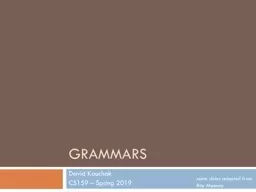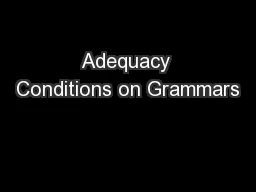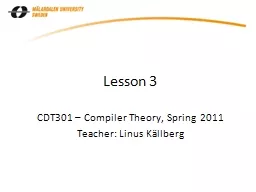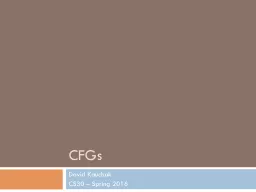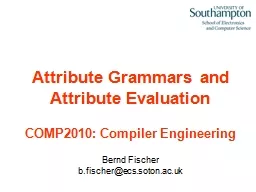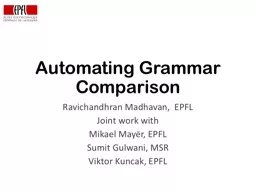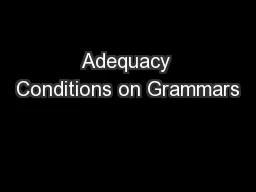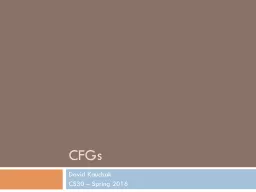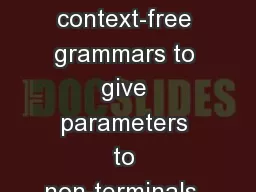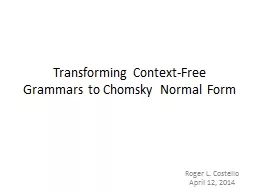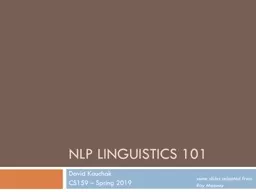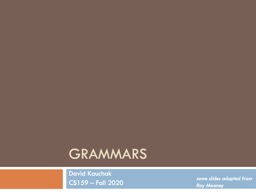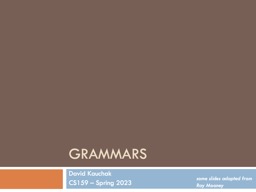PPT-Grammars David Kauchak CS159 – Spring 2019
Author : aaron | Published Date : 2019-06-30
some slides adapted from Ray Mooney Admin Assignment 3 out due next Monday Quiz 1 Context free grammar S NP VP left hand side single symbol right hand side one
Presentation Embed Code
Download Presentation
Download Presentation The PPT/PDF document "Grammars David Kauchak CS159 – Spring ..." is the property of its rightful owner. Permission is granted to download and print the materials on this website for personal, non-commercial use only, and to display it on your personal computer provided you do not modify the materials and that you retain all copyright notices contained in the materials. By downloading content from our website, you accept the terms of this agreement.
Grammars David Kauchak CS159 – Spring 2019: Transcript
Download Rules Of Document
"Grammars David Kauchak CS159 – Spring 2019"The content belongs to its owner. You may download and print it for personal use, without modification, and keep all copyright notices. By downloading, you agree to these terms.
Related Documents

